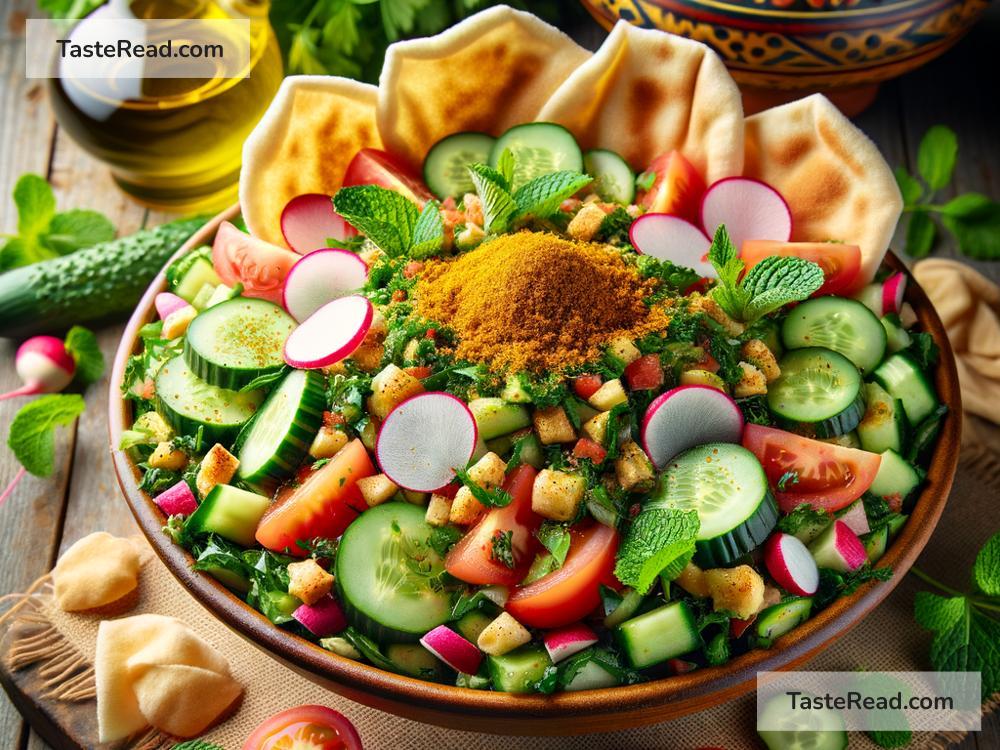Discovering Multilayered Flavors of Lebanese Fattoush Salad in Lebanon
When visiting Lebanon, you’re not just exploring a breathtaking country full of mountains, beaches, and cultural landmarks; you’re also stepping into a food lover’s paradise. Lebanese cuisine is famous for its fresh ingredients, bold flavors, and rich traditions, with dishes that reflect both the vibrant culture and the love for hospitality. Among the many treasures of Lebanese food, Fattoush is one dish you simply must try. This refreshing, colorful salad is more than just a culinary staple—it’s an experience that captures the essence of Lebanese flavors.
What Is Fattoush?
Fattoush is a traditional Lebanese salad made with fresh vegetables, crispy bread, and a tangy dressing. Its name comes from the Arabic word “fatt” (meaning “crushed” or “crumbling”), referring to the pieces of fried or toasted pita bread that serve as the star ingredient. Unlike ordinary salads, Fattoush is a vibrant feast for the senses, featuring crunchy textures, zesty spices, and an unbeatable freshness in every bite.
What sets Fattoush apart is how it blends simple ingredients with bold flavors. The salad is built on diced vegetables like lettuce, cucumbers, tomatoes, radishes, and green onions. Add a sprinkle of dried herbs like sumac (a reddish spice with a tangy, citrusy flavor), and mix in pomegranate molasses for a sweet-tangy touch, and you have a classic Lebanese masterpiece.
Fattoush: A Taste of Tradition
Lebanese cooking is all about celebrating local produce, fresh herbs, and seasonal ingredients, and Fattoush is no exception. Historically, it has its roots in humble village cuisine. Farmers in northern Lebanon would use leftover pieces of pita bread and combine them with vegetables and herbs from their gardens to create a simple yet satisfying meal. Over time, this dish transformed into a beloved classic.
Digging into a bowl of Fattoush offers more than just nourishment; it provides a glimpse into the Lebanese way of life. Every ingredient tells a story about the country’s agricultural abundance and its long-standing commitment to creating healthy, flavorful meals.
The Multilayered Flavors of Fattoush
The beauty of Fattoush lies in its layers of flavor and textures. Each bite is a unique mix of tanginess, crispness, and freshness. Here’s what goes into the heart of this dish:
-
Crispy Pita Bread: The fried or baked pita bread acts as a delicious garnish. Its crunch contrasts beautifully with the juiciness of the vegetables. Traditionally, the bread is cut into small squares or torn into bite-sized pieces.
-
Sumac Spice: This deep red spice is a hallmark of Lebanese cuisine. Its tangy, lemon-like flavor elevates the salad dressing and adds a burst of brightness to the dish.
-
Fresh Vegetables: Whether it’s the snap of radishes or the sweetness of tomatoes, the variety of vegetables makes every spoonful exciting. The salad is always prepared using fresh, seasonal veggies, ensuring high quality and taste.
-
Tangy Dressing: The dressing is simple yet bold. A mixture of olive oil, lemon juice, pomegranate molasses, garlic, and sumac coats the veggies evenly while infusing them with robust flavor.
Where to Try Fattoush in Lebanon
If you’re visiting Lebanon, experiencing authentic Fattoush is a must! Whether you’re dining in bustling markets, cozy mountain villages, or chic Beirut restaurants, each place will have its take on this timeless dish.
-
Village Taverns: For a truly authentic experience, head to villages such as Byblos or Zahle. Local taverns and family-run eateries serve Fattoush recipes that have been passed down through generations, using farm-fresh vegetables and traditional spices.
-
Beirut’s Restaurants: The capital city Beirut is home to countless restaurants offering modern spins on Lebanese favorites. From fine dining establishments to casual cafes, Fattoush is often served as part of a mezze (a collection of small dishes).
-
Home-Cooked Meals: If you’re lucky enough to be invited to a Lebanese home, prepare for the ultimate food experience. Homemade Fattoush is hard to beat, as it’s often made with love, care, and ingredients straight from the garden.
Experiencing the Fattoush Culture
Fattoush isn’t just food—it’s a window into Lebanese hospitality, which is central to the culture. Sharing food is ingrained in the country’s traditions, and meals are an opportunity to connect, celebrate, and spend quality time with loved ones. Whether you’re eating Fattoush at a festive gathering or enjoying it as a side dish with grilled meats and hummus, you’ll notice how food brings people together.
How to Make Your Own Fattoush
The good news about Fattoush is that it’s easy to recreate at home! All you need are fresh vegetables, a deliciously tangy dressing, and crispy bread. While you may not have access to Lebanon’s fertile gardens or aromatic spices, you can still capture the spirit of this dish by incorporating sumac and pomegranate molasses, both of which are available in international grocery stores.
Try making your own version of Fattoush and experiment with different ingredients, just as Lebanese families have done for generations. Pair it with grilled chicken, falafel, or simply enjoy it on its own for a light, flavorful meal.
Conclusion
Fattoush Salad is more than a dish—it’s a symbol of Lebanese heritage and the simplicity of bringing fresh ingredients together to create something remarkable. In Lebanon, you’ll find the richest flavors, the warmest hospitality, and the joy of sharing food with others. Whether you’re learning about its village origins or enjoying its crisp textures at an upscale restaurant, Fattoush connects you to the heart of Lebanese culture one delicious bite at a time. So, if you ever find yourself in Lebanon, don’t miss the chance to discover the multilayered flavors of this iconic salad!


